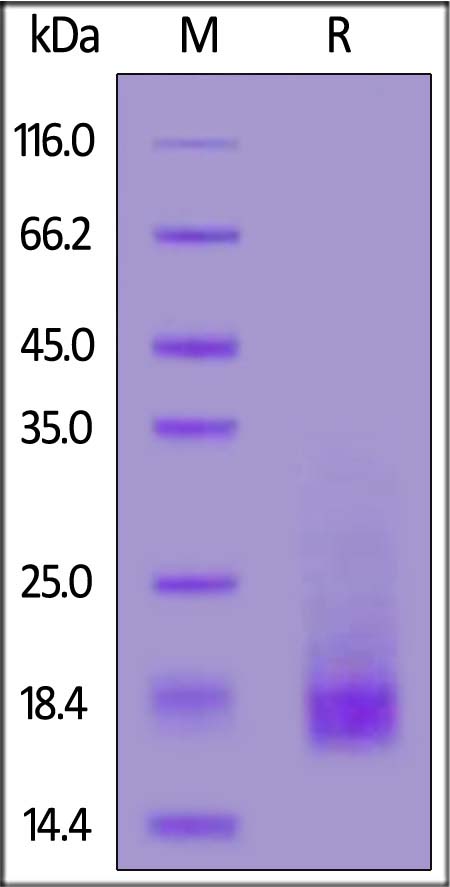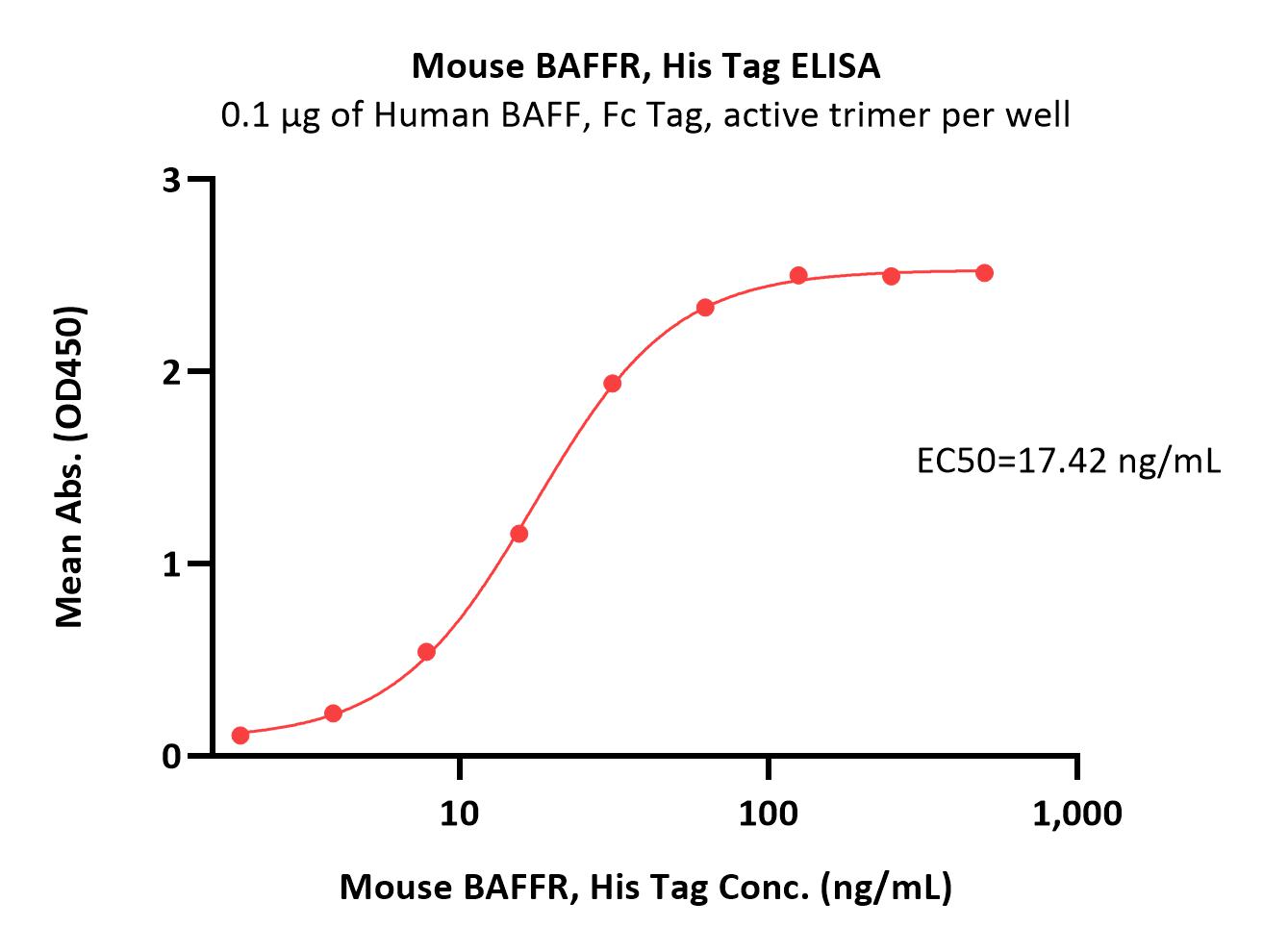分子别名(Synonym)
BAFFR,TNFRSF13C,BROMIX,CD268,CVID4,prolixin,BAFF-R
表达区间及表达系统(Source)
Mouse BAFFR, His Tag (BAR-M52H8) is expressed from human 293 cells (HEK293). It contains AA Ser 10 - Ala 71 (Accession # Q3SXS6-1).
Request for sequence
蛋白结构(Molecular Characterization)

This protein carries a polyhistidine tag at the C-terminus.
The protein has a calculated MW of 8.7 kDa. The protein migrates as 15-20 kDa under reducing (R) condition (SDS-PAGE) due to glycosylation.
内毒素(Endotoxin)
Less than 1.0 EU per μg by the LAL method.
纯度(Purity)
>90% as determined by SDS-PAGE.
制剂(Formulation)
Lyophilized from 0.22 μm filtered solution in PBS, pH7.4. Normally trehalose is added as protectant before lyophilization.
Contact us for customized product form or formulation.
重构方法(Reconstitution)
Please see Certificate of Analysis for specific instructions.
For best performance, we strongly recommend you to follow the reconstitution protocol provided in the CoA.
存储(Storage)
For long term storage, the product should be stored at lyophilized state at -20°C or lower.
Please avoid repeated freeze-thaw cycles.
This product is stable after storage at:
- -20°C to -70°C for 12 months in lyophilized state;
- -70°C for 3 months under sterile conditions after reconstitution.
电泳(SDS-PAGE)

Mouse BAFFR, His Tag on SDS-PAGE under reducing (R) condition. The gel was stained with Coomassie Blue. The purity of the protein is greater than 90%.
活性(Bioactivity)-ELISA

Immobilized Human BAFF, Fc Tag, active trimer (Cat. No. BAF-H5261) at 1 μg/mL (100 μL/well) can bind Mouse BAFFR, His Tag (Cat. No. BAR-M52H8) with a linear range of 2-63 ng/mL (QC tested).
Protocol
背景(Background)
BAFF receptor (B-cell activating factor receptor, BAFF-R), also known as tumor necrosis factor receptor superfamily member 13C (TNFRSF13C), is a membrane protein of the TNF receptor superfamily which recognizes BAFF. B-cell activating factor (BAFF) enhances B-cell survival in vitro and is a regulator of the peripheral B-cell population. Overexpression of BAFF in mice results in mature B-cell hyperplasia and symptoms of systemic lupus erythematosus (SLE). Also, some SLE patients have increased levels of BAFF in serum. Therefore, it has been proposed that abnormally high levels of BAFF may contribute to the pathogenesis of autoimmune diseases by enhancing the survival of autoreactive B cells.























































 膜杰作
膜杰作 Star Staining
Star Staining












